Lesson 23: International Approaches to Bicycle and Pedestrian Facility Design
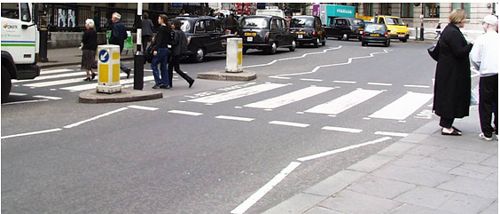
Lesson Outline
- Comparison of walking/biking levels.
- What can U.S. learn from other countries?
- Examples of pedestrian facilities.
- Examples of bicycle facilities.
Bicycling and Walking Levels
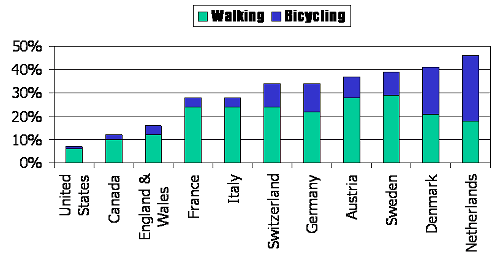
What Can the United States Borrow from Other Countries?
- Better facilities for bicycling and walking.
- Areawide traffic calming of neighborhoods.
- Urban design oriented to people, not cars.
- Restrictions on motor vehicle use.
- Better traffic education and enforcement.
Pedestrian Facilities
- Pedestrian crossings:
| – Zebra. | | – Pelican. | | – Toucan (bikes + pedestrians). | | – Puffin. |
- Pavement messages.
- Pedestrian signal displays.
Pedestrian Crossing Treatments
Pavement Messages
- Used in London and Salt Lake City.
- Prompts tourists and other pedestrians to look in correct direction for traffic.
|
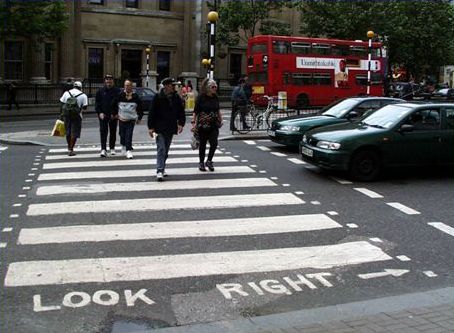
|
Animated Eyes
- Used in Canada.
- Now included in 2003 MUTCD.
- Prompts pedestrians to look for turning vehicle traffic.
|
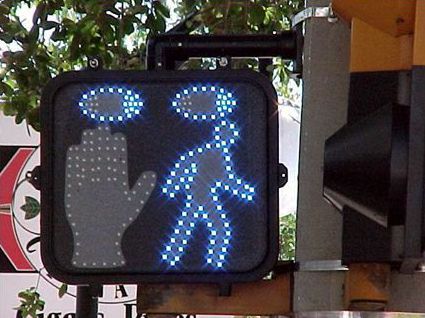
|
Pedestrian Zone/Mall
- Used on downtown streets.
- Some U.S. examples exist.
- Restricts motor vehicle traffic.
- Permits bicycles, buses, and taxis.
|
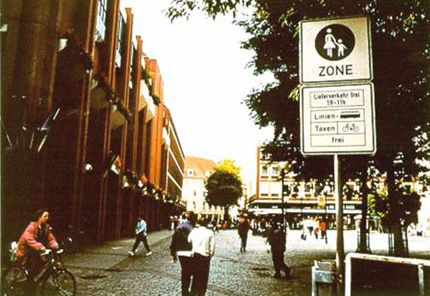
|
| (This picture shows a bicyclist not wearing a helmet.FHWA strongly recommends that all bicyclists wear helmets.) |
Bicycle Lanes—The Netherlands
- Red pavement color.
- Wide enough for two bicyclists.
- Extensive network.
- Marked through intersections.
| 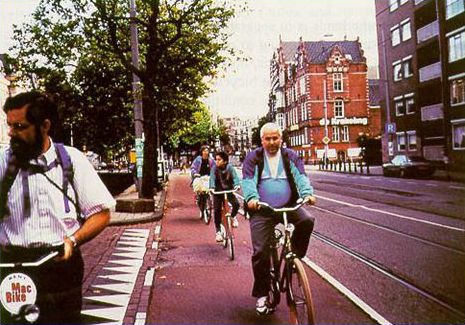
|
| (This picture shows a bicyclist not wearing a helmet.FHWA strongly recommends that all bicyclists wear helmets.) |
Bicycle Signals— The Netherlands
- Red, yellow, green signal indications for bicyclists.
- Special signal phases for bicyclist turning movements.
|
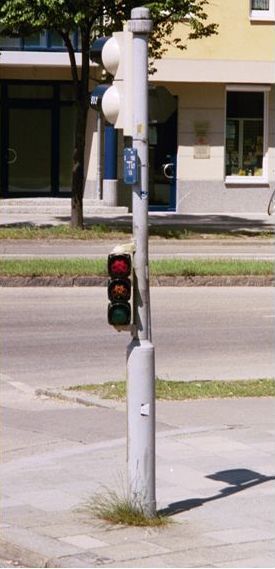
|
Shared Bus and Bicycle Lane—Germany
- Shared lanes are 4.5 meters (m) (15 feet (ft)) wide.
- Shared lane signing and marking.
| 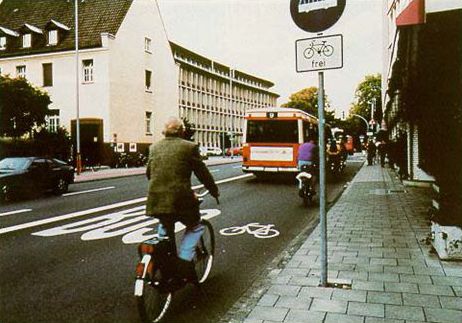
|
| (This picture shows a bicyclist not wearing a helmet.FHWA strongly recommends that all bicyclists wear helmets.) |
Bicycle Parking—Germany
- Common at transit stations.
- Sheltered parking.
- Bicycle rentals common at transit stations.
|
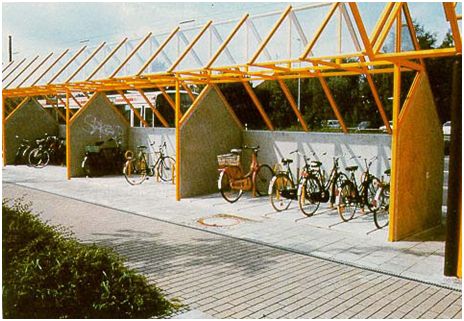
|
Narrow/Contraflow Lanes—United Kingdom
- Narrower than AASHTO standards.
- Contraflow used on one-way streets for bicyclist convenience.
| 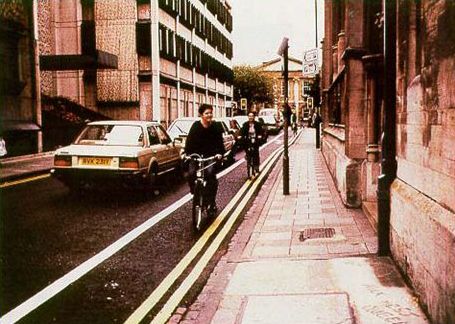
|
| (This picture shows a bicyclist not wearing a helmet.FHWA strongly recommends that all bicyclists wear helmets.) |
Bicycle Trails and Sidepaths
- Used throughout Europe.
- Some on abandoned rail right-of-way.
- Used more along high-speed roadways.
- More crashes at road intersections.
| 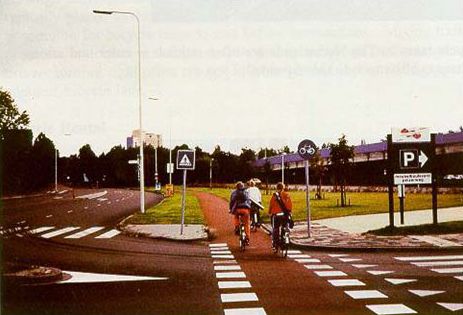
|
| (This picture shows a bicyclist not wearing a helmet.FHWA strongly recommends that all bicyclists wear helmets.) |
Lesson Summary
- Some design concepts have migrated to the United States:
| –Institute of Transportation Engineers (ITE) "Alternative Treatments for At-Grade Pedestrian Crossings." | | –ITE "Innovative Bicycle Facilities." |
- Policy and culture are more difficult to change; they take more time.
FHWA-HRT-05-130
|
